My heart raced as the front door opened and an agitated woman rushed up to me, asking me to remove her drugged-up sister from her house.
I saw the suspect sitting at the table in the dining room, slouching and visibly out of it.
Dinnerware was spread out on the table in front of her. The glint from a large pair of metal scissors suddenly caught my eye.
I knew this was just a simulator – a sort of high-tech videogame projected onto a big screen – but I was totally immersed in the scenario. My eyes were locked on the virtual woman who I knew was likely to attack me.
The half a dozen police officers standing eagle-eyed behind me, observing my every move in silence, were also unnerving me.
The body armour I was wearing was tight around my chest and restricted my breathing. The pistol holster on my hip felt heavy and unfamiliar.
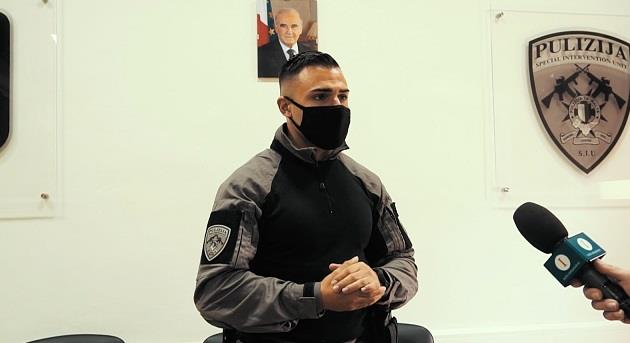
Inspector Malcolm Sammut
Suddenly, the woman on the screen stood up, grabbed the scissors and started moving threateningly towards me. I shouted out a warning, but she kept coming.
I pulled out the gun – a service Glock 17 which, although modified for the simulator is essentially the real thing – and shot her twice in the chest.
The woman crumpled down to the floor. I turned around with a smile on my face. ‘Threat neutralised,’ I was thinking, feeling rather pleased with my quick thinking and shooting skills.
But the look Inspector Malcolm Sammut gave me was not one of approval. I had clearly done something wrong.
“What are you forgetting?” he asked.
I couldn’t think of anything. To my mind, I had used legitimate force to neutralise a threat. That’s why police officers carry guns, no?
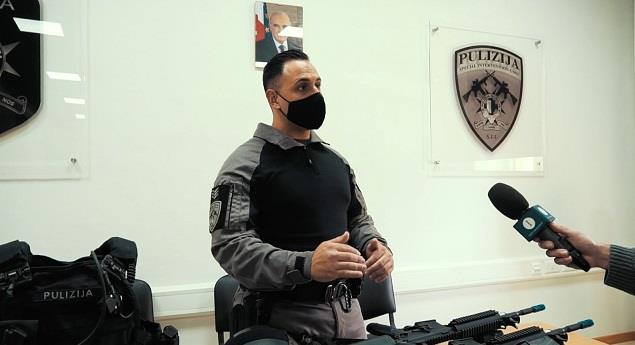
Sergeant Ryan Galea
“What other equipment do you have on you?” Sammut asked again.
I looked down at my waist. Suddenly it dawned on me. I could have used the taser gun and avoided a fatality. I was so focused on pulling out the gun that I had totally forgotten the instructions I had been given a few minutes before on how to use the non-lethal alternative.
This is precisely why real police officers train on this simulator – not only to hone their weapon skills and drills, but also to learn how to make split-second decisions that can mean the difference between life and death, not only for them but also for other people in the scenario, be they innocents or suspects.
The weapons simulator was inaugurated last year. Inspector Sammut explained that there are endless possibilities when it comes to scenarios.
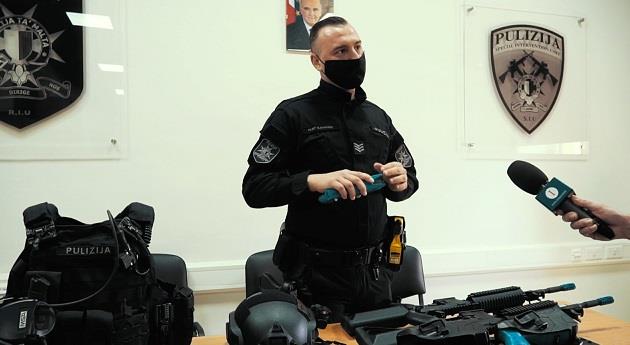
Sergeant Gareth Damato
These include a traffic stop scene, where a driver is pulled over because he fits a suspect’s description. The simulator, controlled via a laptop, is totally customisable and each scenario can play out in different ways, according to what the instructors decide.
The driver could simply comply, or he could pull out a gun on you. Even if he pulls out the gun, he may or may not shoot, which means that the officers training on the simulator can never know what’s coming next. This keeps them on edge, their minds sharp. In real life, no one can see the future, and neither can they see the future on the simulator.
Other scenarios include searching a house, helping a fellow officer during a shootout and hostage situations.
“These judgmental scenarios can be adapted for new recruits and seasoned officers alike,” Sammut explains. “We look out for the officers’ reaction and their verbal communication. We can programme the simulator according to how they behave. Scenarios can have up to six different outcomes. So, if the officer is giving good commands, we can make the suspect comply. Conversely, we could make him become even more aggressive.”
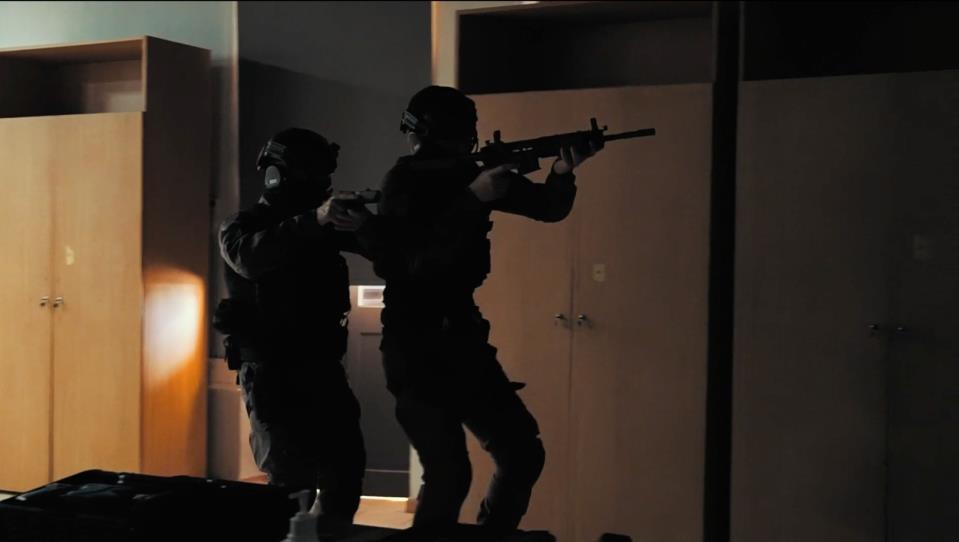
The simulator can also serve as a virtual shooting range, which is cheaper and safer to run than the real thing. Although, Sammut explains, live fire shooting on an outdoor range is also carried out because nothing can compare to the real thing.
Yet the weapons used for the simulator are very realistic. They are, in fact, real weapons customised to shoot lasers rather than bullets, while Co2 provides recoil.
“Every laser splash is caught on the simulator, gauging accuracy and reaction time,” Sammut explains.
Officers train in full SWAT gear, which includes body armour, helmets, eye protection, radios and much more. This serves to make the training as realistic as can be.
To make the training more challenging, officers are made to do push-ups or star jumps before they go into the simulator room, to get their blood pumping.

“It is very important to be familiar with the equipment you use in real life,” Sergeant Ryan Galea, one of the instructors, explained. “You need to know where your weapon, taser, pepper spray and other equipment is. You cannot waste a second searching for them.”
The fact that such work often takes place in very close quarters often means that an officer’s reaction time has to be very fast. “If somone pulls a gun on you, or lunges at you with a knife, you have a split second to make a decision. You have to be fast and accurate. This is also the reason why the weapons used on the simulator are the same ones we use on the job.”
Inspector Sammut explained that officers always try to avoid using lethal force. Verbal warnings are given and, only when no other options are left do officers draw their guns.
When possible, officers will use their taser gun, which can immobilise a suspect without causing death.
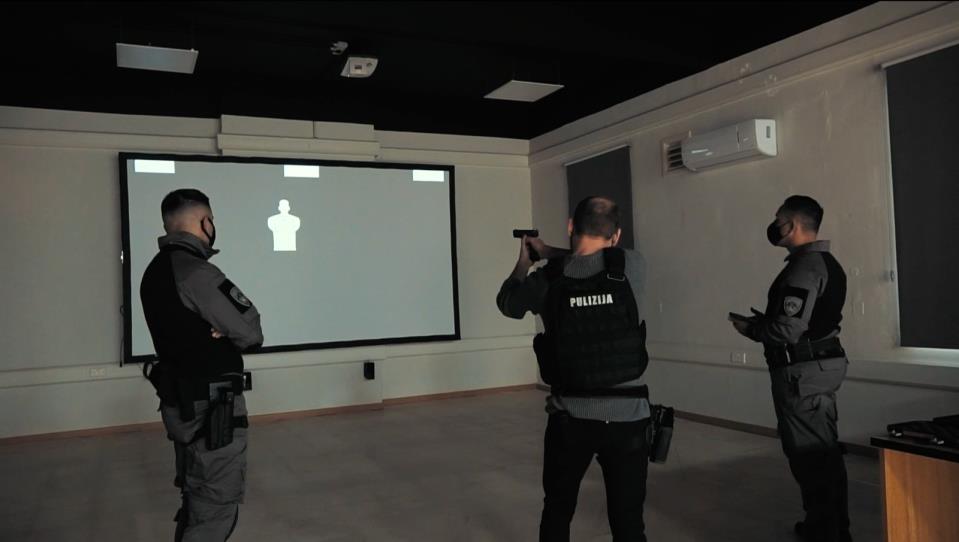
A non-lethal alternative
Sergeant Gareth D’Amato, a taser instructor who serves on the Rapid Intervention Unit, took us through the paces.
Every effort is made to persuade the suspect to comply, he explained.
“When we take out the taser, we switch it on and give a verbal warning. If that doesn’t work, we switch on the taser, and a light and two laser aiming beams at the front of the taser switch on. These are often enough to make someone comply. If that doesn’t work, we can press a button which releases a visible burst of electricity from the front of the taser.”
The sight and sound of this spark is truly intimidating, but it does not always scare the suspects into submission.
“If the suspects do not comply and remain a threat to the officers or passers-by, the taser is shot at them. Two prongs shoot out of the front of the weapon and lodge into the suspect’s skin, delivering a short but powerful electric charge that causes the muscles to contract. We always avoid shooting at the face or private parts,” D’Amato explained.
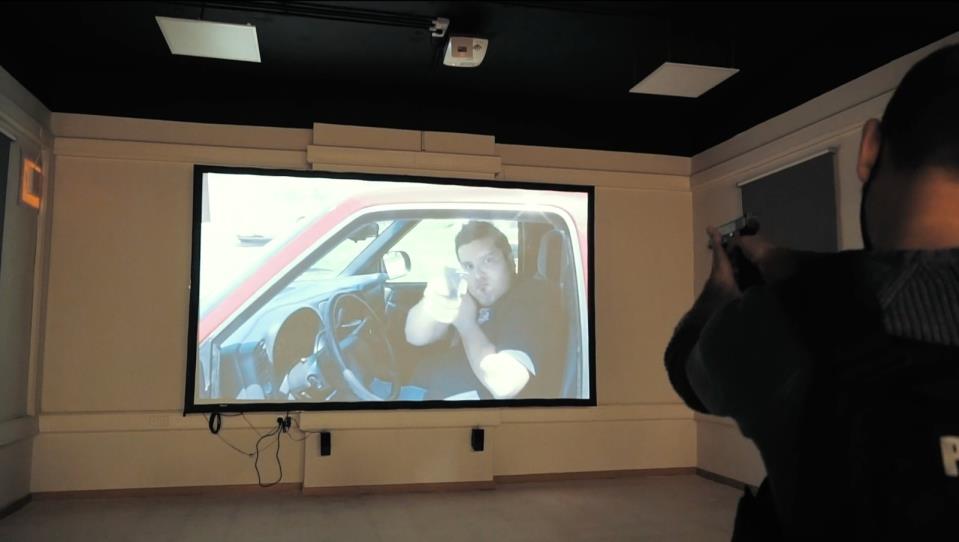
At this point, the officers will move in to make the arrest.
The futuristic looking weapon has a range of 4 to 7 metres. Each taser has two cartridges, meaning it can be shot twice. If one of the prongs does not connect with the suspect’s skin, the taser will not be as effective. In that case, the officers will move in and ‘stun’ the suspect by touching the taser to the skin, thus closing the circuit.
An ambulance is almost always called when a taser is used.
Sergeant D’Amato explained that all police officers passing through the academy are thought how to use the taser gun. “We train them not only on how to use it, but also when.”
“We always try to defuse a situation with verbal warnings, but if our life or the life of others is in danger, we would have no choice but to use force.”